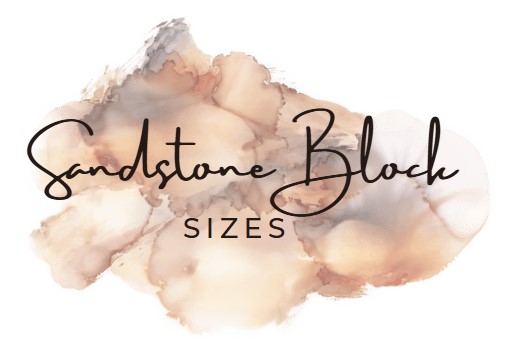Sandstone is one of the most popular natural stones used in construction, landscaping, and architectural projects. Its natural beauty, durability, and also versatility make it a preferred choice for everything from a sandstone retaining wall and pathways to grand facades and decorative features. When selecting sandstone for your project. It’s essential to understand the different sandstone block sizes and grades available. This guide will help you navigate these options to ensure you choose the right sandstone blocks for your needs.
Sandstone Block Sizes
Sandstone blocks come in various sizes, each suited to specific applications. The size of the block you choose will depend on the type of project you’re undertaking and the aesthetic you’re aiming to achieve.
- Standard Blocks: Standard-sized sandstone blocks typically measure around 500mm x 500mm x 1000mm. These are the most commonly used blocks in construction and landscaping projects. They are ideal for retaining walls, garden edging, and larger structural elements. Their size makes them easy to handle and install while providing the necessary mass and stability.
- Custom-Cut Blocks: For projects requiring specific dimensions, custom-cut sandstone blocks are an excellent option. These blocks can be cut to virtually any size, allowing for greater flexibility in design and application. Custom-cut blocks are often used in architectural features, bespoke landscaping projects, and any situation where a unique size or shape is required.
- Capping Blocks: Capping blocks, typically smaller than standard blocks, are used to finish the tops of walls or steps. They provide a clean, polished look and protect the structure below from weathering. These blocks usually measure around 500mm x 500mm x 100mm but can be customized to fit your project.
Grades of Sandstone Blocks
In addition to different sizes, sandstone blocks come in various grades, each with its unique characteristics. The grade of sandstone refers to its quality, texture, and suitability for specific applications.
- A Grade Sandstone: A Grade sandstone blocks are the highest quality available. They are precisely cut with minimal blemishes, offering a uniform appearance with consistent color and texture. A Grade blocks are ideal for projects where aesthetics are paramount, such as in high-end residential or commercial developments, architectural facades, or decorative features.
- B Grade Sandstone: B Grade sandstone blocks are a step down from A Grade but still offer excellent quality. These blocks may have some minor imperfections, such as small veins, color variations, or slight surface irregularities. B Grade sandstone is perfect for projects where a natural, rustic look is desired, such as in retaining walls, garden beds, or pathways. The variations in color and texture can add character and charm to the finished project.
- Random Grade Sandstone: Random Grade sandstone boulders are irregular in shape and size, often with more significant imperfections or variations. These blocks are typically used in more rustic or organic designs, where the irregularity of the stone can add to the overall aesthetic. They are commonly used in garden walls, rural properties, or projects that require a more natural look.
- Quarry Seconds: Quarry seconds are the lowest grade of sandstone blocks, often used in situations where appearance is less critical. These blocks may have significant imperfections, such as large veins, cracks, or inconsistent coloring. Quarry seconds are typically used for backfill, erosion control, or other functional purposes where the primary concern is cost-effectiveness rather than appearance.
Choosing the Right Sandstone Blocks for Your Project
When selecting sandstone blocks, it’s crucial to consider both the size and grade of the stone to ensure it meets your project’s needs. Here are a few tips to help guide your decision:
- Assess Your Project Requirements: Consider the purpose of the sandstone in your project. For structural applications, such as retaining walls, larger blocks with high durability may be necessary. For decorative features, you might prioritize aesthetic qualities and opt for A or B Grade sandstone.
- Consider the Environment: The location and environment of your project can influence your choice of sandstone. In coastal areas, for example, choosing a grade with excellent weathering properties is essential to withstand the elements.
- Balance Cost and Quality: While A Grade sandstone offers the highest quality, it also comes with a higher price tag. B Grade or Random Grade sandstone can provide a more cost-effective solution while still delivering the desired look and performance.
- Customisation Needs: If your project requires specific dimensions or unique shapes, consider opting for custom-cut blocks. This allows for greater flexibility in design and ensures the sandstone fits perfectly into your project.
Conclusion
Understanding the different sandstone block sizes and grades is crucial in selecting the right material for your project. Whether you’re building a retaining wall, creating a stunning architectural feature, or designing a bespoke landscape, the right sandstone blocks can make all the difference in achieving a beautiful, durable, and timeless result. By carefully considering your project’s needs and the qualities of each sandstone option, you can confidently choose the perfect stone to bring your vision to life.


